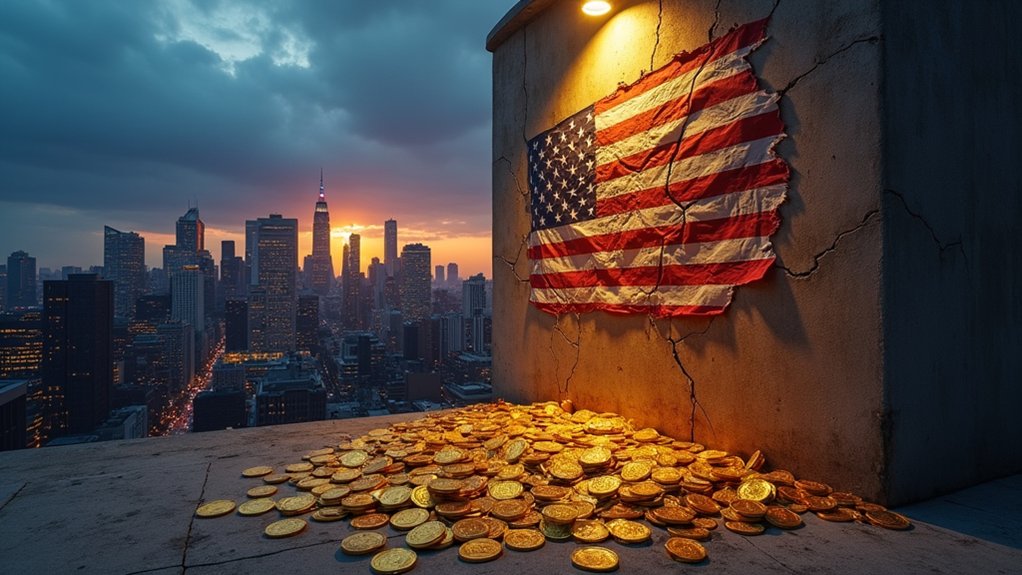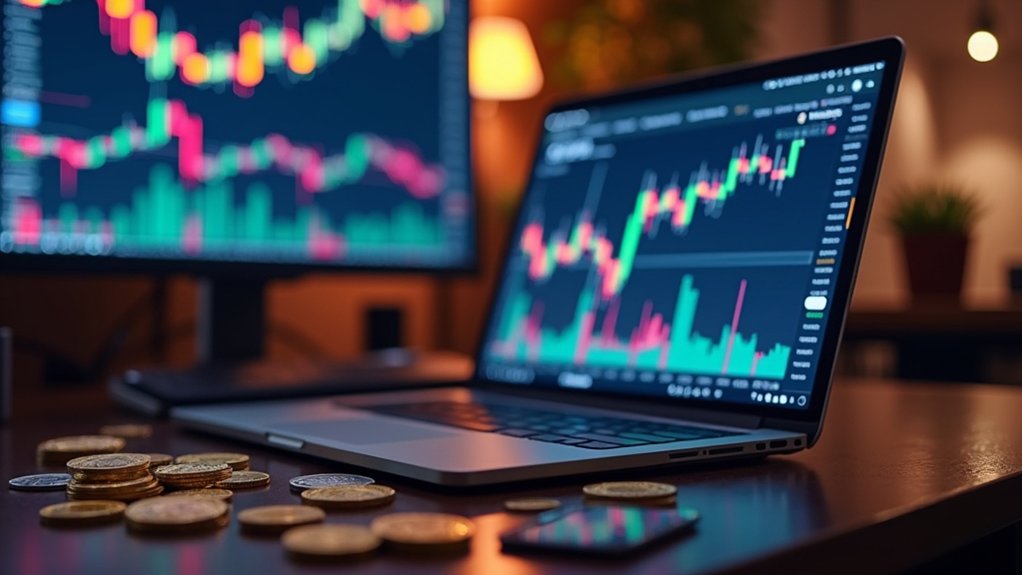When Moody’s decided to downgrade the U.S. credit rating on May 16, 2025, it was like tossing a lit match into a room full of fireworks. The downgrade wasn’t just a little blip on the radar; it marked the first time all three major agencies had downgraded the U.S. credit below their top rating. Talk about a wake-up call.
Moody’s downgrade of U.S. credit on May 16, 2025, ignited fiscal panic—first time all agencies agreed on a downgrade.
The reasons? Increased government debt, rising interest payments, and a revenue generation system that’s pretty much a train wreck. Deficits are expected to balloon to nearly 9% of GDP by 2035—up from a cozy 6.4% in 2024. Yeah, that’s not good. This alarming situation has led many investors to reassess the role of market sentiment in driving their investment decisions.
In the midst of this fiscal chaos, Bitcoin started to soar. Investors began scrambling for safe-haven assets, and what better alternative is there than cryptocurrency? In a world where traditional finance feels like sinking sand, Bitcoin emerged as the life raft. It’s like the rebellious teenager of the financial world, flipping off the establishment while skyrocketing in value. Who knew that a credit downgrade could send Bitcoin prices into orbit?
Meanwhile, the U.S. government is facing a debt burden that’s rising faster than a balloon at a birthday party. Higher interest rates mean more expensive borrowing, which is a lovely gift that keeps on giving—if you enjoy fiscal headaches. Interest payments are projected to surpass defense spending by 2035, further complicating national security and fiscal stability. Additionally, this downgrade highlights the U.S. government’s excessive spending compared to its revenue, raising concerns about long-term fiscal health.
Investors, understandably, are now demanding higher yields on U.S. debt. Because, you know, riskier business means pricier tickets.
This downgrade isn’t just an American issue; it sends shockwaves through global markets. The U.S. might find its global economic leadership questioned, as other economies start to look like viable alternatives. Confidence in the U.S. economy? Let’s just say it’s taking a nosedive.





